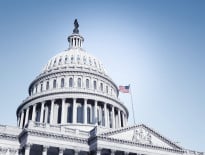Almost two months after the Paycheck Protection Program launched, lenders finally have details about their role in forgiving the loans.
The U.S Small Business Administration and Treasury Department issued two interim final rules Friday evening with guidance for lenders and borrowers about the loan forgiveness process. The rules, however, still do not address the concerns of some small business owners that the slow reopening of the economy during the coronavirus pandemic will prevent them from meeting requirements for loan forgiveness.
The SBA had issued on May 15 the form for borrowers to use when requesting loan forgiveness. After receiving the form, lenders will have 60 days to decide whether the borrower should receive full, partial or no forgiveness on the loan amount. Lenders will submit the decision to the SBA. If denying forgiveness, lenders will need to explain the reasons.
The SBA said it can review any lender decision and will notify the lender within 90 days if it accepted the decision and pay the forgiveness amounts. Borrowers will be able to ask the SBA to reconsider the lender’s decision.
Full forgiveness still requires the small business to use at least 75 percent of the loan proceeds on payroll-related expenses, and the time frame for using the proceeds remains at eight weeks. Some small business owners want these requirements changed since phased reopenings will leave many businesses not operating with full staff by the end of the eight-week loan period, making loan forgiveness challenging.
Small business owners seeking forgiveness must provide required documentation to the lender. The borrower will be responsible for calculating the loan forgiveness amount, but lenders will have to review documentation and the calculation.
“Providing an accurate calculation of the loan forgiveness amount is the responsibility of the borrower, and the borrower attests to the accuracy of its reported information and calculations on the Loan Forgiveness Application,” the SBA said in the interim final rule. “Lenders are expected to perform a good-faith review, in a reasonable time, of the borrower’s calculations and supporting documents concerning amounts eligible for loan forgiveness.”
Among the items that borrowers will need to provide are documents detailing cash and non-cash payroll costs for employees and owners.
The tools used by the borrower could determine how much time lenders need to spend on the process. The SBA said a payroll report by a recognized third-party payroll processor would need only minimal review, but a more extensive review of calculations and data would be appropriate if payroll costs were not documented by a recognized source.
Documentation must also be reviewed for the non-payroll expenses allowed for PPP loans, including business mortgage interest payments, rent or lease payments, and utility costs.
Lenders must also confirm that the borrower performed the forgiveness calculation correctly.
“If the lender identifies errors in the borrower’s calculation or material lack of substantiation in the borrower’s supporting documents, the lender should work with the borrower to remedy the issue,” the SBA said.
The SBA added that lenders will not need to independently verify the information reported by the borrower since documentation was provided.
Just as some banks and credit unions turned to digital processes to file the loan applications, automation could also help with the forgiveness process. Boston-based fintech Numerated, which built a platform for processing PPP loans, has also introduced a PPP forgiveness tool.
“We developed a loan forgiveness solution that allows banks to say to their customers, ‘We’ve made this complex process as easy as possible,’” Dan O’Malley, Numerated’s CEO and co-founder, said in a statement. “Many banks stood up digital lending for the first time during this pandemic, and we want to ensure that same rapid, responsive service continues through to forgiveness and beyond as banks move to offer digital buying experiences across a wider set of their products.”
Massachusetts small businesses have received more than 105,000 PPP loans totaling over $14 billion.









